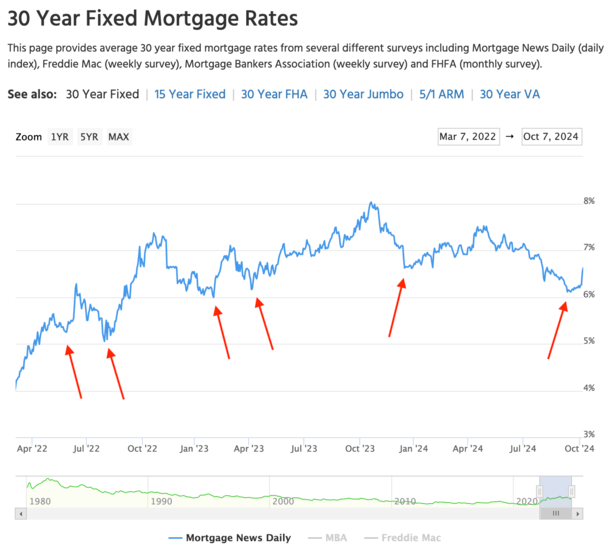US Basel impasse casts doubt on international capital accord
unitedbrokersinc_m7cmpd2024-10-08T22:23:07+00:00European Union flags near the EU Commission in Brussels, Belgium. Ksenia Kuleshova/Bloomberg As U.S. regulators grapple over a joint capital reform proposal, the future of international collaboration on bank supervision could hang in the balance.Last month, top finance officials from France, Germany and Italy — the three largest economies in the European Union — sent a letter to the European Commission, telling the governing body to prepare to adjust its own capital reform efforts, noting that the U.S. was expected to deviate from the internationally agreed-upon standards.Andrés Portilla, managing director of regulatory affairs at the Institute for International Finance, a trade group for global financial firms, said the officials were aiming to "Trump-proof" Europe's capital standards, pointing to the risk that a second term in office for former President Donald Trump could bring significant changes to or even an outright abandonment of the latest accord from the Basel Committee on Banking Supervision, known as the Basel III endgame."If there is an event where the U.S. decides not to implement those market rules, then Europe would have that ability to also suspend implementation or to change the rules altogether," Portilla said. "That's really what is being discussed at this stage, given the high levels of uncertainty around implementation here in the U.S."Portilla noted that the concerns are not limited to Europe. The Australian Prudential Regulatory Authority, the country's top banking regulator, addressed the Basel framework in its latest annual corporate plan, noting that the "risk of fragmentation" — meaning notable differences between jurisdictions — "remains elevated."But the EU letter, first obtained and reported on by Politico, goes beyond adjusting the latest capital standards from the Basel Committee. It also calls for the commission to reconsider regulatory standards writ large to "put stronger emphasis on the competitiveness of the financial sector, particularly banking, and its capacity to finance the economy" as part of a broader goal of "reversing Europe's declining competitiveness."The shift toward emphasizing domestic interests over financial stability consideration has some policy experts and advocates concerned. Dennis Kelleher, head of the consumer advocacy group Better Markets, said this mentality could result in regulatory jurisdictions competing with one another to create the most accommodating policies for their own banks, regardless of what it means for financial stability. "It's going to kill the international regulatory regime that is essential to preventing financial crises and catastrophes like the 2008 crash. Everybody goes their own way. I worry about my banks, and you worry about your banks," Kelleher said. "It is inevitably going to result in a race to the regulatory bottom. Therefore, we're going to end up with very minimally regulated banks and financial institutions … and that just means there are going to be more and bigger crashes and bailouts." Graham Steele, staff director of the Corporations and Society Initiative at Stanford Graduate School of Business and former Treasury official. Graham Steele, former Treasury Department assistant secretary for financial institutions, said pro-competition rhetoric has long been used to justify deregulation but, in reality, such moves are not a "panacea to fix broader economic issues."Steele, who left the Biden administration in January, said European officials have been questioning the U.S. commitment to the Basel Committee's latest standards for years, but recent events have emboldened them to begin edging away from their commitments. "Our own inability, because of domestic politics and other dynamics, to implement endgame has hampered our ability to push back on some of the things the Europeans are doing," Steele said. "There's a clear sense of opportunism here that, because we do not have our house in order, there's an opening for other countries to revisit some of these international principles that were established post-financial crisis."The letter comes as efforts by the Federal Reserve, the Federal Deposit Insurance Corp. and the Office of the Comptroller of the Currency to implement the Basel III endgame have been ground to a halt by a disagreement among the agencies. The original joint proposal from July 2023 would have increased capital obligations for the largest banks in the country by 19%. But after pushback and the threat of litigation from the banking industry, the agencies agreed to make changes to the proposal.Last month, Fed Vice Chair for Supervision Michael Barr said regulators had agreed upon revisions that would have narrowed the scope of the framework and increased capital requirements for the largest banks by just 9%. But an impasse on the FDIC's board of directors — ostensibly over the decision to re-propose the amended rule as opposed to finalizing it — has put the amendment on an indefinite hold.If the new proposal, as outlined by Barr, were finalized as is, it could raise alarms with other jurisdictions because of how it would deviate from the standards set out by the Basel Committee in 2017. Of particular concern, Portilla said, is the treatment of market risks, known as the Fundamental Review of the Trading Book.In a speech last month, Barr said the revised proposal would allow banks to use internal models to assess market risk, rather than standardized ones, as called for by the Basel Committee. Portilla said other jurisdictions are concerned the change would harm their bank's abilities to compete for global capital markets activity."If only one group of banks, let's say the European ones, apply those rules, then they feel they would be in a significant competitive disadvantageous situation," Portilla said. "And that's why the attention has focused on those rules, ultimately."Embedded differences elsewhere in each jurisdiction's regulatory framework make alignment difficult. In the U.S., many banks expressed concern about the overlap between the proposed FRTB change and the current measure of risk in the global market shock component of the annual stress test. Banks say this would result in them being charged twice for the same risks. Europe, meanwhile, has its own distinct regulatory requirements, including so-called Pillar II charges that are assigned based on specific risks at individual banks. The standards set by the Basel Committee are not binding and there is an expectation that each jurisdiction would have to make adjustments based on their own legal systems and existing frameworks. But, Steele said, adjusting for these differences in an ad hoc manner risks undermining the overall agreement. Bertrand Dumont, deputy director general of France's treasury. Nathan Laine/Bloomberg "If we want to depart from international standards in any sort of way, that gives rise to an argument that we are not being Basel-compliant. If we want to make special allowances for U.S.-specific products and services, that gives Europeans a hook to come back to us and say, 'Well, you've got your pet issue that you want an allowance for, here, we've got our things too,'" Steele said. "It leads to that kind of horse trading. You open yourself up to further negotiations, and negotiations down on the substantive level."A move away from interjurisdictional coordination would be welcomed by some in Washington. In a House Financial Services Committee hearing on international regulatory bodies in March, Rep. French Hill, R-Ark., argued that such groups have caused U.S. regulators to be "subsumed by European ideas." At that same hearing, Rep. Ritchie Torres, D-N.Y., asked, "Where did we get this notion that the United States, as the financial superpower of the world, must conform to European standards of banking?"But those involved in the Basel process — including Trump's choice for Fed Vice Chair for Supervision Randal Quarles — have said that such bodies tend to follow the U.S.'s lead on policy, rather than the other way around. Steele said it was advantageous for American regulators to engage in international forums, noting the old adage "if you're not at the table, you're on the menu."Still, large U.S. banks do not feel like their interests are being represented. One of the central complaints about the Basel III endgame is that U.S. banks thought the committee's intent was to bring the world up to its standards. Instead, they are set to see the biggest increase in new aggregate capital.Kevin Fromer, president and CEO of the Financial Services Forum, a trade group for the nation's largest banks, said the industry is not advocating a withdrawal from Basel, but he said compliance can be achieved without additional capital."Our view is the U.S. is not facing any capital inadequacy in terms of our banking system," Fromer said. "There are ways to implement the Basel III endgame here in the United States that don't raise capital of any significance for the institutions that would be impacted, which right now are going to be predominantly the GSIBs, our members. We firmly believe it can be implemented, have fidelity to the standard and not raise additional capital for the institutions here."However the issues facing the Basel III endgame are resolved in the U.S. and abroad, some see the current episode as a pivotal moment for global regulatory policy.Sean Vanatta, a financial regulation historian, said the overarching trend in economic policymaking has been to favor individual national interests over shared global goals. In last month's letter, Vanatta sees that shift spreading to regulatory policies, too, and undermining the notions of cooperation that have underpinned the Basel Committee and other international organizations for decades."The question, going forward, is whether nationalist financial-regulatory policies will be pursued constructively or cynically, here in the U.S., in Europe, and in other important markets," he said. "Whatever happens, I think the Basel Committee is losing credibility in the way that the neoliberal internationalist project is losing credibility. For better and worse, liberal internationalism is on the wane."


